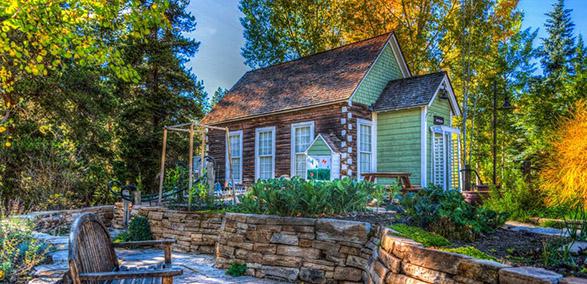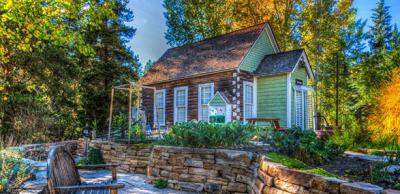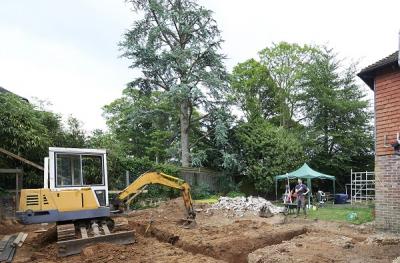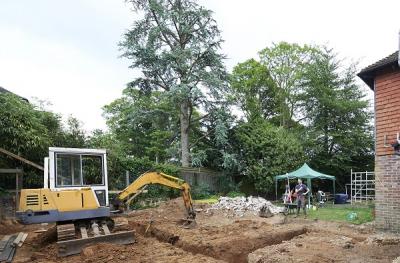How to get it right: Building near trees while avoiding ground heave
Building near trees comes with its own challenges for foundations as we highlighted in this Trees and foundations article. In this article we focus on ground heave.
What is ground heave?
Ground heave is the upward movement of the ground usually associated with the expansion of clay soils which swell when wet.
As the ground can’t expand downwards or sideways, the result is that the exposed upper surface of the ground rises up.
The impact of heave is opposite to the effect of ‘subsidence’ which is where the ground is unstable and sinks downward, or ‘settlement’ which is caused by the weight of the building.
Displacement is generally less that 150mm but even this can lead to serious structural damage to the buildings fabric and foundations.
This can happen in certain types of soil when a tree (or trees) that was previously absorbing large quantities of water is removed.
Heave can also occur in soils vulnerable to frost, leaking drains and water supplies. A single tree can remove as much as 150 litres of water a day. The maturity, size and type of tree, how absorbent the clay soil is and water table will all affect the amount of ground movement after the trees removal.
Determining when heave might occur is difficult - it could be after a couple of ‘wet’ months or after years but it’s always best to take it into consideration!
Common signs of ground heave
- Cracking to brickwork and windows: this cracking is more likely to be vertical, whereas subsidence cracking is more likely to be diagonal.
- Doors sticking as their frames become out of square
- Lifting of paths and patios surrounding buildings
The remedial costs associated with heave can be substantial.
Here are ways to reduce the effects of heave.
Undertake analysis of the ground conditions before starting work
Investigations may include visual inspection, historic research and drilling boreholes or trial holes to determine a soil classification and its plasticity index (how shrinkable the ground might be).
Consider the possibility of future heave
If a tree(s) is retained within or close to your plot, or has been removed prior to work starting, chances are the soil is drier prior to foundations being laid. Often you’ll have no control if they’re removed later or die off and the soil will then rehydrate.
Where trees have been removed the ground will generally rehydrate over a 12-24 month period (unless there are sustained droughts) after which time the possibility of heave will reduce.
Choose your type of foundation carefully
The safest option is to form the foundation below the area affected by the trees and this may mean digging deep. The depth required will determine which foundation is most suitable - trench fill foundations for depths up to 1.5m or pile foundations with ground beams if going beyond 2m.
Where heave is likely to be a problem or if foundation depth exceeds 1.5m, cellular structures should be installed against foundations and beneath floor slabs to reduce the upward force of heave from transmitting to the structure above. Products such as Claymaster, Clayboard and Heaveguard are all designed to create a compressible void that allows the ground to ‘swell’ without damaging the building structure.
Get the right foundation depth for your ground conditions
Don't guesstimate - use LABC Warranty's Foundation Depth Calculator, which considers the proximity of the tree and the type of soil, among other factors, to calculate the correct depth required up to a maximum depth of 2.5m.
If you need to dig deeper than 2.5m, get a suitably qualified and experienced expert to carry out an assessment of your site. Even if piling becomes the best option you should still include protective compressible void formers around pile caps and beneath edge beams.
Consider a suspended floor
A beam and block suspended floor may be a more cost effective solution compared to the cost of accommodating heave movement.
Don’t forget about your drains
Drains are just as vulnerable to heave and should be protected. If heave is likely, then minimum gradients should be avoided and steeper gradients with additional granular material of up to 150mm thickness should be used.
Further information
Section 5.2 LABC Warranty Technical Manual http://bit.ly/2yQTmFC
http://www.telegraph.co.uk/finance/4472656/Beware-of-heave-the-cost-is-enough-to-make-you-sick.html
Sign up to the building bulletin newsletter
Over 48,000 construction professionals have already signed up for the LABC Building Bulletin.
Join them and receive useful tips, practical technical information and industry news by email once every 6 weeks.
Subscribe to the Building Bulletin




Comments
Pad foundation and ground beams
Submitted 1 year 9 months ago
LABC Response
Submitted 1 year 8 months ago
Thank you for your enquiry.
Unfortunately, LABC is unable to provide guidance or design advice on specific projects. You are recommended to seek the services of a suitably qualified and competent structural engineer to design the proposed piles and ground beams.
We’re sorry that we cannot be of anymore assistance.
Kind regards,
LABC Team
Add new comment